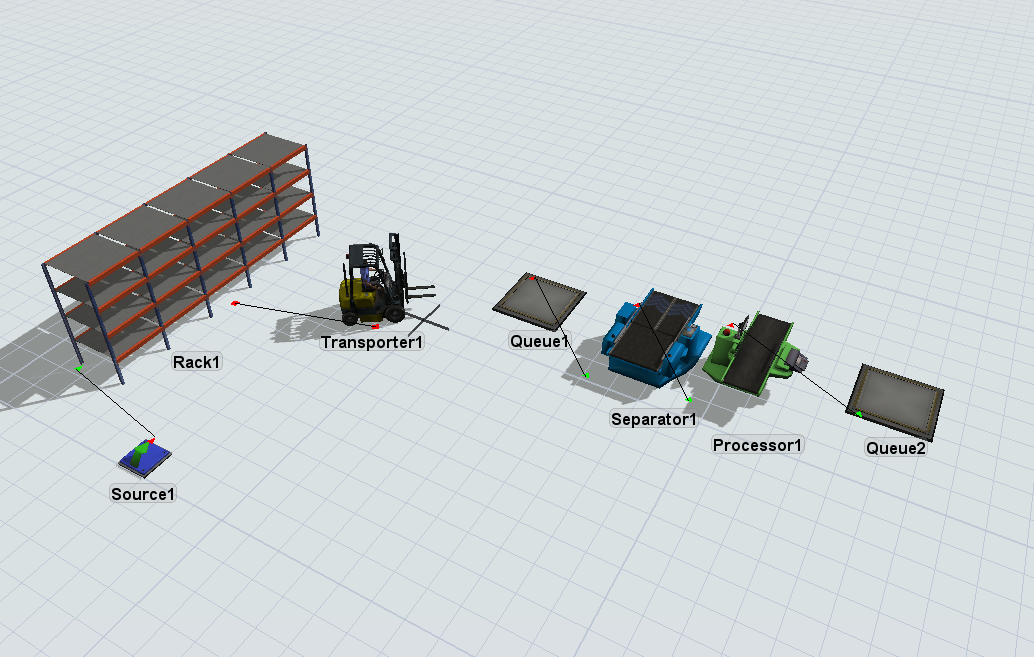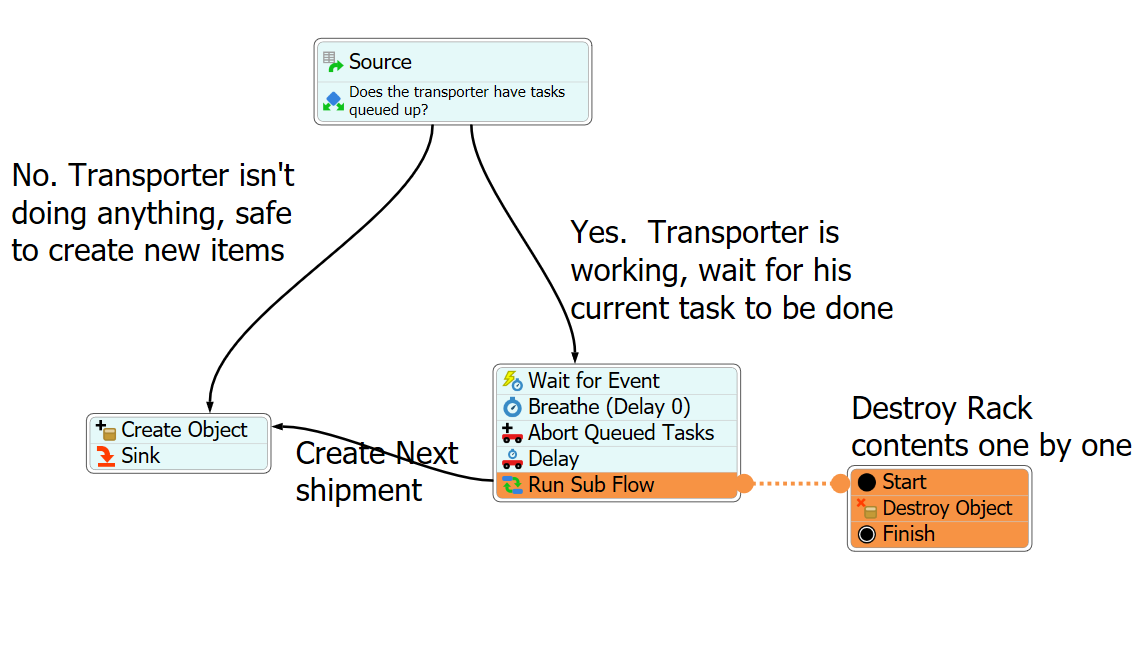I have a model that creates items based on a schedule (every 50 seconds). I want to have the racks completely cleared when the new items arrive. I have tried different messages being sent from the source, but I can't figure out how to clear the racks and then have the new items arrive and stay in the racks.
The last thing I tried was sending a message from the source (on-creation with a delay of 49.99999) to the racks. This cause my forklift to stop and the model crashes every time I hit reset :)
Also, the cones for adjusting 3D object size have disappeared. How do I fix this?
Thanks for the help.


